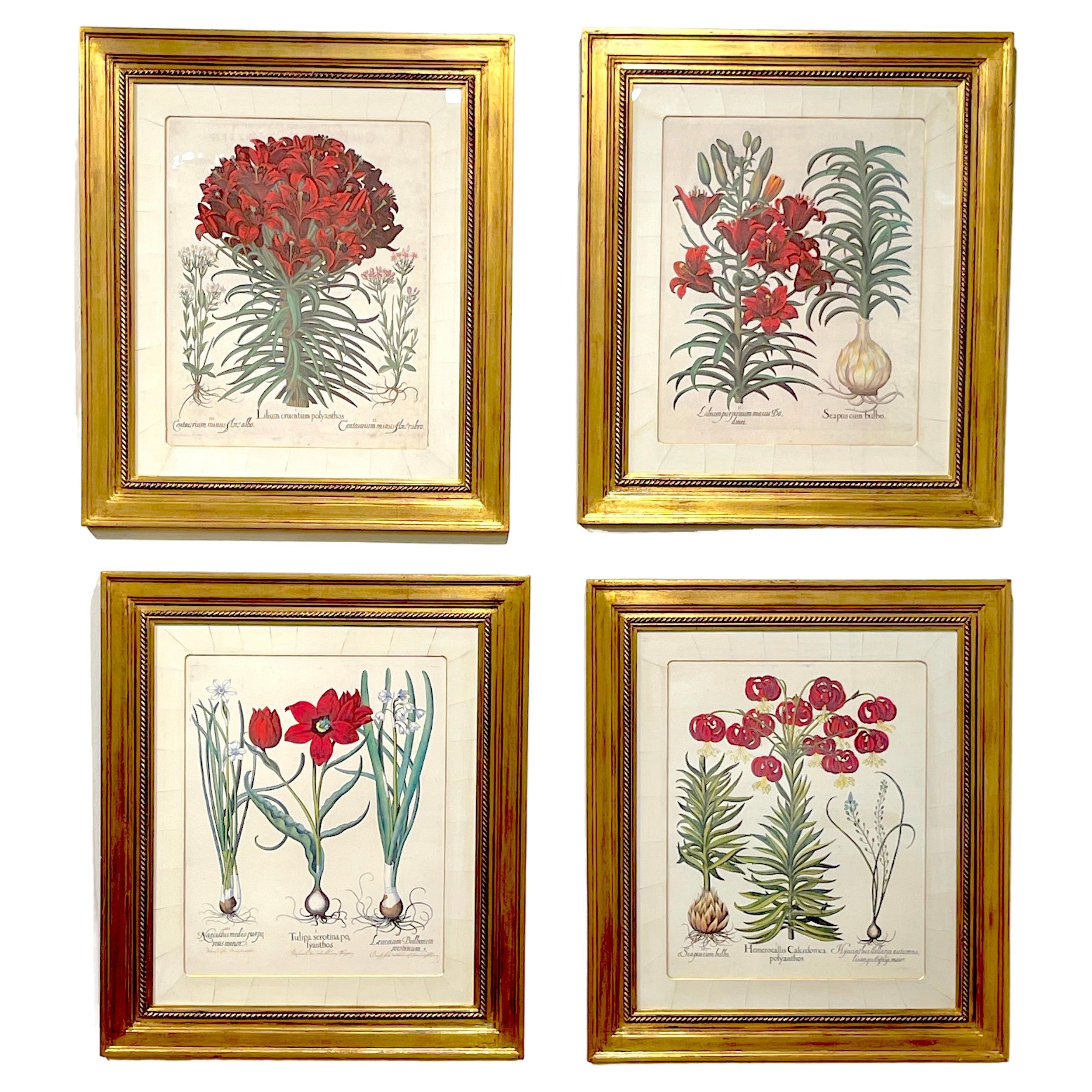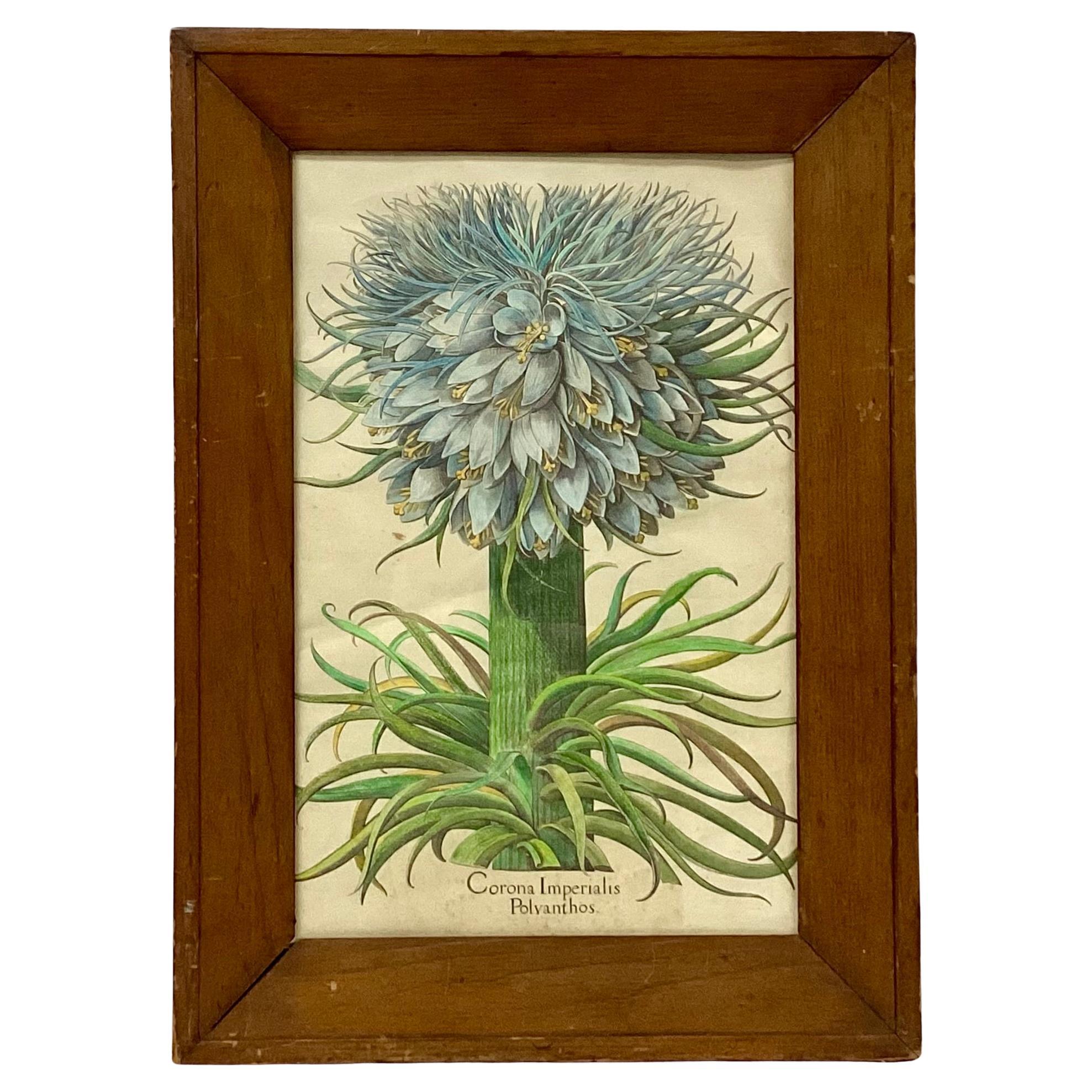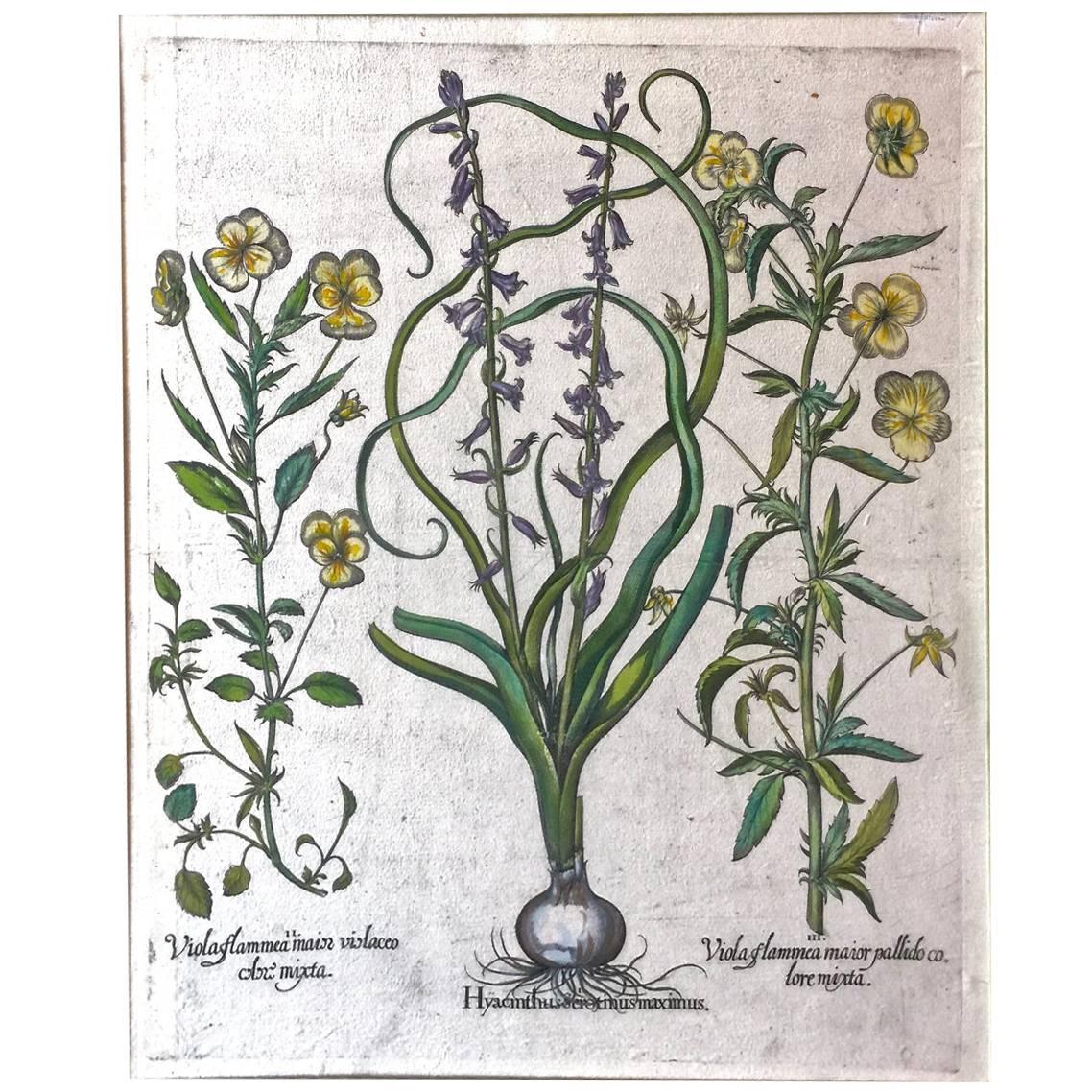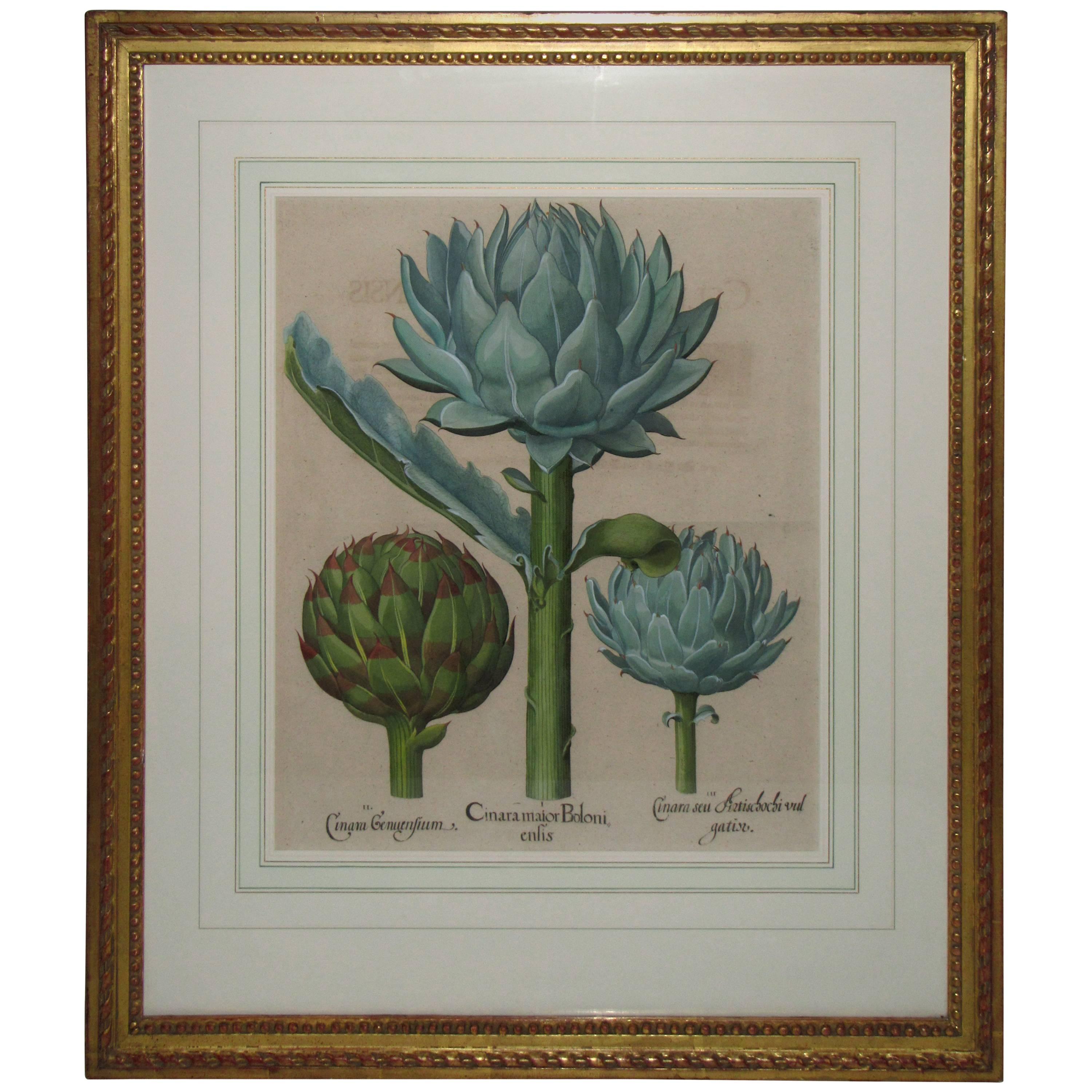Items Similar to 2 Hand Painted Old World Floral Botanical Paintings After Basilius Besler 57"
Want more images or videos?
Request additional images or videos from the seller
1 of 13
2 Hand Painted Old World Floral Botanical Paintings After Basilius Besler 57"
About the Item
A pair of impressive vibrant hand painted botanical still life florals, featuring Paenia peregrina flor coccineo and Corona imperialis polyanthos. Painted on a thin board, framed behind glass in green crackle painted frame. Purchased from an Antique shop in France in the 1990s.
Paeonia peregrina is a species of flowering plant in the peony family Paeoniaceae, native to Southeastern Europe and Turkey. It is an erect, herbaceous perennial with 9-lobed, deeply divided leaves. Single, glossy red flowers, 10–13 cm (4–5 in) in diameter, with prominent yellow stamens, are borne in spring (May in the Northern Hemisphere).
Fritillaria imperialis, the crown imperial, imperial fritillary or Kaiser's crown, is a species of flowering plant in the lily family Liliaceae, native to a wide stretch from the Anatolian plateau of Turkey, Iraq and Iran (i.e. Kurdistan) to Afghanistan, Pakistan, Northern India and the Himalayan foothills. It is also widely cultivated as an ornamental and reportedly naturalized in Austria, Sicily, and Washington State, USA. The common names and also the epithet "imperialis", literally "of the emperor", refer to the large circle of golden flowers, reminiscent of an emperor's crown.
Basilius Besler (1561–1629) was a respected Nuremberg apothecary and botanist, best known for his monumental florilegium, the Hortus Eystettensis (lit. The Garden at Eichstätt), 1613.
Biography
Besler was born in Nuremberg, Germany on February 13 1561, the son of Michael Besler. His first wife was Rosine Flock, who he married on 31 January 1585. Later he married Susanne Schmidt on 1 December 1596. Altogether he had 16 children. He was elected a member of the city council in 1594.
Sunflower from Hortus Eystettensis
Besler established a pharmacy, Zum Marienbild, at Nuremberg's Hay Market in 1589, and developed his own botanical garden and collection of specimens, for which he became well known.
He was curator of the garden (Eichstätt Garden) of Johann Konrad von Gemmingen (1561–1612), Prince-bishop of Eichstätt in Bavaria. The bishop was an enthusiastic botanist who derived great pleasure from his garden, which rivaled Hortus Botanicus Leiden among early European botanical gardens outside Italy.
The gardens surrounded the bishop's palace, Willibaldsburg, which was built on a hill overlooking the town. These gardens had been started in 1596 and designed by Besler's colleague, Joachim Camerarius the Younger (1534–1598), a physician and botanist. Upon Camerarius' death in 1598, Besler had the remainder of Camerarius' plants moved to Eichstätt and carried on the work of planting and supervision.
The gardens were ransacked by invading Swedish troops under Herzog Bernhard von Weimar in 1633-4, but were reconstructed and opened to the public of Eichstätt in 1998.
Besler died in Nuremberg on 13 March 1629.
Work
Fascicvlvs Rariorvm title page (1616)
In 1611, the bishop, who was already quite ill, commissioned Besler to compile a codex of the plants growing in his garden, a task which Besler took sixteen years to complete, the bishop dying shortly before the work was published in 1613. Plates were not signed at the bottom and in some the names of the artist are hidden away in the illustration. These include those of Kilian, J. Leypolt, or the initials G.R., G.H., D.K., and F.H. The names used for the plants were polynomials. This plant atlas or Florilegium was published by Ludwig Jungermann and printed in large format.
Besler did not consider himself scientist, but rather relied on the extant literature of his time including Camerarius, Clusius, Fuchs, Tabernaemontanus and Lobelius, but his work predated the introduction of many overseas plants to Germany. He indexed the collection with both the Latin and old German names.[2] At publication it represented the largest and most magnificent example of its type.
Dimensions:
40" x 56.5", sans 31.5" x 47.5"
- Similar to:Basilius Besler (Artist)
- Dimensions:Height: 56.5 in (143.51 cm)Width: 2 in (5.08 cm)Depth: 40 in (101.6 cm)
- Sold As:Set of 2
- Materials and Techniques:
- Period:
- Date of Manufacture:20th Century
- Condition:Wear consistent with age and use. Good vintage condition, wear and distressing, crazing, distressing to frame.
- Seller Location:Dayton, OH
- Reference Number:
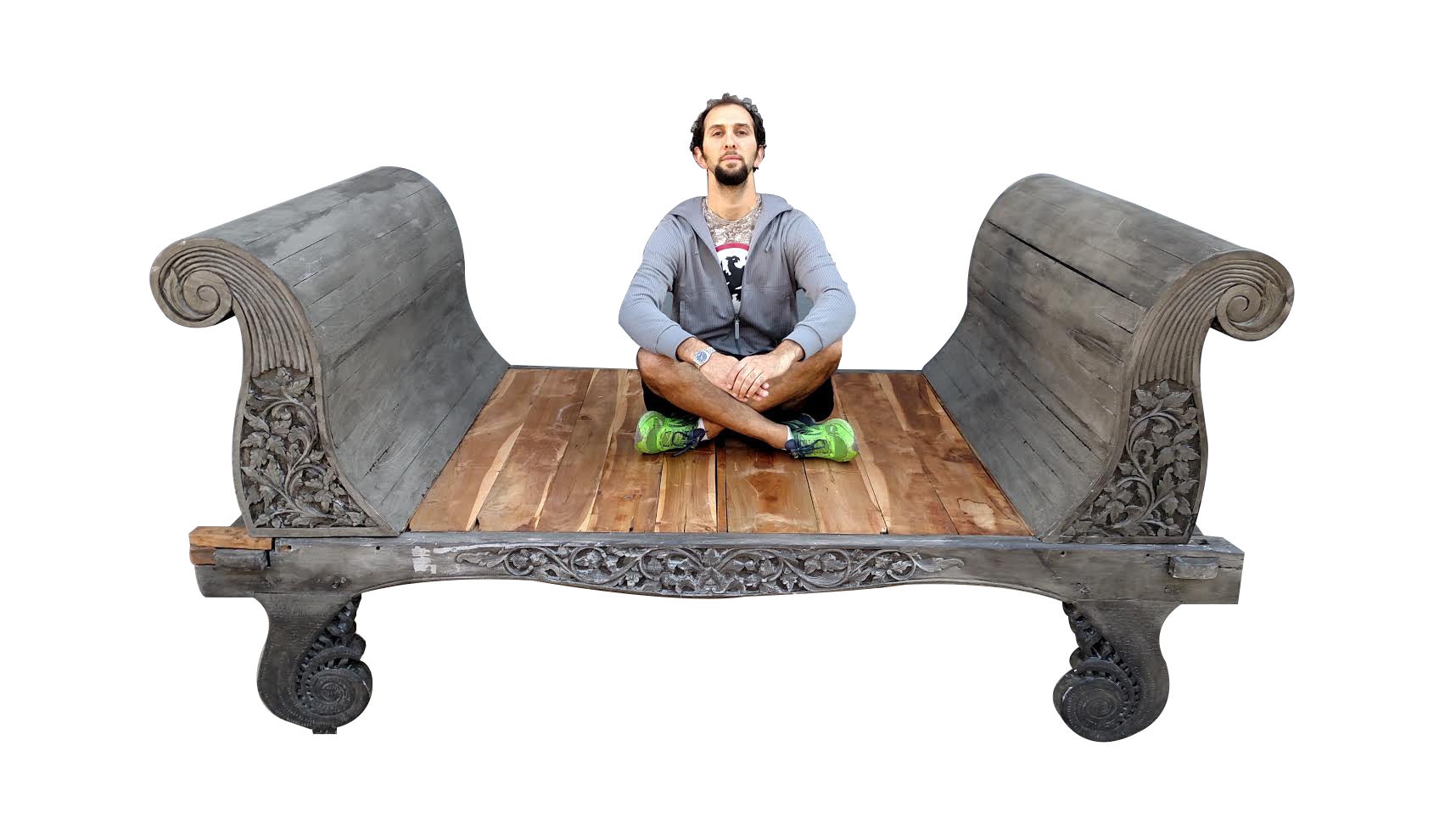
About the Seller
4.9
Platinum Seller
These expertly vetted sellers are 1stDibs' most experienced sellers and are rated highest by our customers.
Established in 2010
1stDibs seller since 2020
1,113 sales on 1stDibs
Typical response time: <1 hour
- ShippingRetrieving quote...Ships From: Dayton, OH
- Return PolicyA return for this item may be initiated within 2 days of delivery.
More From This SellerView All
- Original Mixed Media Gold Foil Botanical Floral Oil Painting on CanvasLocated in Dayton, OHVintage mixed media botanical painting on canvas featuring leaves and flowers with gilded gold foil accents. Signed lower right. Purchased from a gallery in Boca Raton Fl. 50".Category
Late 20th Century Modern Paintings
MaterialsFoil
- Vintage M Aaron Floral Botanical Bouquet Still Life Oil Painting on Canvas 31"Located in Dayton, OHVintage floral still life oil painting on canvas featuring a colorful bouquet of flowers in a vase on a table. Signed lower right M Aaron. Framed in ornate g...Category
Late 20th Century Paintings
MaterialsCanvas, Paint
- Isaac Blessing Jacob After Govert Flinck 18th C. Baroque Old Master Painting 63"By Rembrandt van RijnLocated in Dayton, OHAn exceptional original Old Master reproduction of Isaac 'Blessing Jaacob' after Govert Flinck, a student of Rembrandt. The original 17th cen...Category
Antique 18th Century European Baroque Paintings
MaterialsGesso, Hardwood, Paint
- Springer Spaniel Dog Landscape Portrait Oil Painting After John Wootton 43"By John WoottonLocated in Dayton, OHLarge vintage black and white Springer Spaniel wooded landscape oil painting on canvas, after John Wootton. Framed in ebonized black frame with gold accents. John Wootton (c.1686– 13 November 1764)[1] was an English painter of sporting subjects, battle scenes and landscapes, and illustrator. Life Born in Snitterfield, Warwickshire (near Stratford-upon-Avon), he is best remembered as a pioneer in the painting of sporting subjects – together with Peter Tillemans and James Seymour[2] – and was considered the finest practitioner of the genre in his day.[1] As such, his paintings were very fashionable and were sought after by those among the highest strata of the British society. These included figures such as George II of Great Britain, Frederick, Prince of Wales, and the Duke of Marlborough. It is likely that he received artistic training from Jan Wyck before 1700.[1] Wootton may have begun life as a page to the family of the Dukes of Beaufort. His earliest surviving dated work is the equine portrait Bonny Black (1711).[1] He remained active until his death in 1764, based in the capital of English horse racing at Newmarket, and producing large numbers of portraits of horses and also conversation pieces with a hunting or riding setting. He acquired a classicising landscape style based on that of Gaspard Dughet, which he used in some pure landscape paintings, as well as views of country houses and equine subjects.[1] This introduced an alternative to the various Dutch and Flemish artists who had previously set the prevailing landscape style in Britain, and through intermediary artists such as George Lambert, the first British painter to base a career on landscape subjects, was to greatly influence other British artists such as Gainsborough.[3] He is now somewhat eclipsed in the field of animal paintings by the later George Stubbs (1724–1806), who is considered technically superior. John Wootton died in London on 13 November 1764. Examples of his animal painting can be found in the Tate Gallery, London, the Virginia Museum of Fine Arts, Richmond, the Yale Center for British Art, in the Elizabethan Great Hall at Longleat and in The Portland Collection...Category
Late 20th Century Paintings
MaterialsCanvas, Paint
- Antique Dance of Apollo w Muses Original Oil Painting After Baldassare PeruzziLocated in Dayton, OHA large antique original oil painting re-imagining “The Dance of Apollo with the Muses” by Baldassare Peruzzi. “Baldassare Tommaso Peruzzi (7 March 1481 – 6 January 1536) was an Ital...Category
Early 20th Century Neoclassical Paintings
MaterialsPaint, Fabric
- Vintage Tole Hand Painted Woodland Cottage Landscape Framed Metal TolewareLocated in Dayton, OHAn elegant hand painted toleware landscape. Features colorful hand painted scenes set within cameos. A black background with gold foliate and beaded design. Framed within a Regency s...Category
Late 20th Century Regency Paintings
MaterialsMetal
You May Also Like
- 4 Antique Basilius Besler Botanical Prints Framed Custom Parchment MatsBy Basilius BeslerLocated in West Palm Beach, FLSet of Four Antique Basilius Besler Botanical Prints With Custom Parchment Mats, sold as a set of four only. Basilius Besler (1561-1629) This c...Category
Antique 18th Century German Baroque Prints
MaterialsGlass, Giltwood, Lacquer, Paper
- Botanical Print, Corona Imperialis Polvanthus, After Basil BeslerBy Basilius BeslerLocated in Bradenton, FLThe hand-colored botanical print, Corona Imperialis Polyanthos or Crown Imperial Lily, was originally by Basil Besler (1561-1629) a Nuremberg, Germany pharmacist, and published in t...Category
20th Century German Baroque Prints
MaterialsPaper
- Pair of Framed Hand Colored Engravings of Tulips by Basilius BeslerBy Basilius BeslerLocated in Essex, MAEach with crisp vivid colors of the most desirable tulip series.Category
Antique Mid-17th Century European Prints
MaterialsPaper
- Original Framed "Fructus Artischochi" Engraving by Basilius BeslerBy Basilius BeslerLocated in Mt Kisco, NYBotanical hand-colored engraving after original oil on canvas by botanist Basilius Besler (German, 1561-1626), "Fructus Artischochi", pl. 25 from "Hortus Eystettensis...Category
Antique 17th Century German Baroque Decorative Art
MaterialsCopper
- 17th C. Basilius Besler Engraving of Pansies and HyacinthsBy Basilius BeslerLocated in Pasadena, CABeautiful original Basilius Besler engraving of Pansies and Hyacinth dating to 1613 with later hand-coloring.Category
Antique Early 17th Century German Prints
MaterialsLaid Paper
- Original Framed "Cinara Major Boloniensis" Engraving by Basilius BeslerBy Basilius BeslerLocated in Mt Kisco, NYA hand colored copper engraving from one of the greatest botanical picture books ever created, Hortus Eystettensis. Published in Eichstatt, Germany...Category
Antique 17th Century German Baroque Decorative Art
MaterialsCopper
